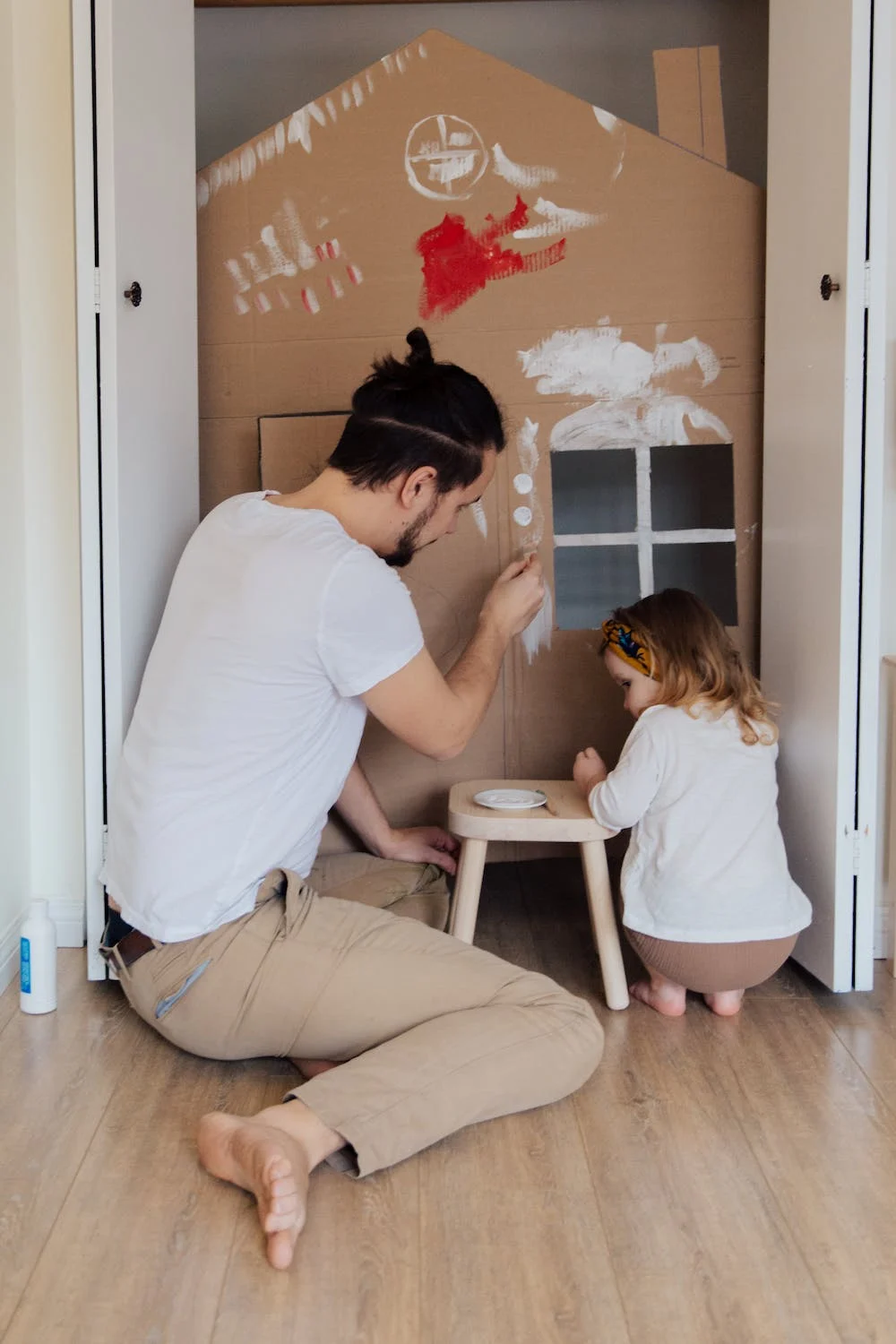Effective Conflict Resolution in Blended Families: 5 Proven Strategies
Introduction
Blended families are becoming increasingly common in modern society, and with them come unique challenges and conflicts. Stepparents often find themselves in the role of a parent without the legal rights or biological connection to their step-children, leading to complicated family dynamics. Managing these conflicts is crucial to maintaining a healthy and happy family environment.
In this article, we will discuss five practical tips for managing conflict in blended families.
Firstly, we will explore the importance of respect and communication. Blended families require open and honest communication to navigate the complexities of family relationships. Stepparents must show respect to their stepchildren and biological parents while also navigating their own needs and boundaries.
Secondly, we will delve into the importance of discipline and planning. Blended families require structure and planning to avoid conflicts and ensure everyone’s needs are met. We will provide practical tips for setting up discipline and routines that work for everyone in the family.
Finally, we will consider the unique challenges and considerations that blended families face, including legal issues, family traditions, and cultural differences. By following these five tips, blended families can successfully navigate conflicts and build a strong and loving family unit.
5 Proven Strategies for Blended Families
Respect and Communication
To effectively manage conflict in blended families, it is important to prioritize both respect for stepchildren as individuals and effective communication between family members to address competing intentions or expectations.
Transitions can be challenging for anyone, especially for children who are moving to a new home. Children may feel anxious, scared or confused as they leave their familiar surroundings behind and adjust to new surroundings. To help children cope during this transition time, parents should be patient and understanding.
Parents should create an environment that is supportive and loving, where children can express their emotions. Parents can also help by establishing a routine and clear expectations for their children, so they can feel a sense of structure and consistency. By encouraging open communication and actively listening to their children, parents can help their children feel heard and supported during this time.

Parents can also help their children feel more comfortable by involving them in the process of moving. This can include allowing children to pack and decorate their own room, taking them to visit the new school or neighborhood, and introducing them to new friends. It is important for parents to be positive and optimistic about the move, emphasizing the excitement of new experiences and opportunities that will come with the change.
Building relationships with stepchildren takes time and effort, and it is crucial to show them respect and acknowledge their feelings. This can be done by listening to their concerns and showing empathy towards their experiences. Respecting their boundaries and allowing them to have a say in family decisions can also help build trust and foster positive relationships.
Effective communication is also essential in managing conflict in blended families. It is important to have open and honest conversations with your partner and stepchildren about expectations, boundaries, and discipline. This can help prevent misunderstandings and resentment from building up over time.
Additionally, it can be helpful to establish regular family meetings to discuss these issues and check in with each member’s emotional well-being. By prioritizing respect and communication, blended families can work towards creating a supportive and harmonious home environment for all members.
Discipline and Planning
Disciplinary consistency and planning are crucial components in establishing a cohesive family unit in blended families. It is important for both parents to agree on how they will discipline their children and come up with a plan together. This helps to avoid confusion and creates a sense of unity in the family.
Stepparents should not have all the power in making significant decisions, and biological parents should also be involved in disciplinary actions. Creating boundaries can also help in managing conflict. Children should know what is expected of them and what the consequences are if they do not follow the rules. This helps to set clear expectations and promotes a sense of structure in the family.

In some cases, seeking professional help may be necessary. ADHD can complicate discipline, and counseling can help parents develop effective strategies for managing behavioral issues. Stress from stepchildren can also affect one’s health and marriage, and family therapy can help in addressing these issues.
It is important to remember that blended families require effort and patience to make it work. Consistency, communication, and planning are key to building a strong foundation in a blended family.
Unique Challenges and Situations
The dynamics of blended families present unique challenges and considerations that require careful attention and understanding.
Blended family dynamics can be complicated, as there are often competing interests and expectations that require delicate navigation. For example, stepparents may have to balance their role as a parental figure with the reality that they do not have the same rights and responsibilities as biological parents.

At the same time, children may struggle to adjust to their new family structure and may feel caught between loyalty to their biological parents and their new family.
Given these complexities, seeking help from a family therapist can be a valuable resource for managing conflict in blended families. A therapist can help families to identify the issues that are causing conflict and develop strategies for resolving them.
Additionally, a therapist can assist with communication and help family members to better understand each other’s perspectives. Ultimately, the success of a blended family depends on a willingness to work together, be patient, and seek outside support when needed.

Define Clear Roles
Defining clear roles is crucial for the success of any family, especially for blended families where there are parents and stepparents involved. By establishing clear expectations and boundaries, everyone in the household can avoid misunderstandings and conflicts. It is important to keep in mind that children in blended families often experience different sets of rules and lifestyles, which can be confusing and stressful for them.
A common question that arises in blended families is how should a stepparent discipline the children. It is recommended that stepparents take a back seat when it comes to major decisions and discipline. The primary responsibility for making decisions and handling concerns regarding the children should be left to the biological parents. However, stepparents can support the parents and help create a unified front. It is important to have open and honest communication with your spouse about your roles and responsibilities in the household. Remember to avoid contradicting each other in front of the children, as this can lead to confusion and undermine the authority of the primary caregivers.

In conclusion, establishing clear roles is an important step towards building a successful blended family. It helps to reduce conflicts and confusion while ensuring that everyone’s needs and expectations are met. By working together and communicating effectively, parents and stepparents can create a nurturing and supportive environment for their children.
Compassion and Patience for Yourself
Step-parenting and blended families can pose unique challenges, and it’s essential to approach the situation with compassion and patience for yourself. Establishing roles takes time, and everyone involved is adjusting to a new family dynamic. It’s crucial to avoid coming on too strong or defaulting to the other parent, as this can undermine trust and respect. Instead, focus on building relationships by observing, asking questions, and getting curious.
It’s also important to make time for self-care and exercise, both individually and as a couple. Blended families can be demanding, and taking care of yourself will help you be at your best and better equipped to handle the challenges that come your way. Exercise can be a great way to spend time together while reaping numerous benefits.

Remember that parenting is hard work, but it’s also incredibly rewarding. Making mistakes and learning from them is part of the process. Focus on the positive impact you can have on your new family’s lives and work towards building cohesive relationships with everyone involved. With time, patience, and effort, you can create a thriving blended family.
Frequently Asked Questions
How do you make a blended family successful?
Everything needs hard work. The success of a blended family depends on a willingness to work together, be patient, and seek outside support when needed.
How does a blended family affect child development?
Children are often the most affected by joining a blended family. Children in blended families may feel overwhelmed and confused about their new family dynamic. They may feel like they are losing a sense of stability as they adjust to new routines, rules, and expectations. This can lead to behavioral or emotional outbursts, as they try to process their feelings and find their place in the new family.
What is an example of having blended family issues?
Blended families can bring advantages, but there are potential disadvantages to consider, including:
- Increased sibling rivalry
- Identity confusion for children
- Legal issues with estate planning and inheritance
- Financial troubles with additional people to support
- Clashing parenting styles lead to conflict. Parents should work together to establish consistent rules and expectations for all children in the family.
What is a modern blended family?
A blended family may consists of having children from previous partners and form a new family unit. In this scenario, you may face challenges around a child’s name and identity, with some children wanting to change their last name to match their new family unit, while others may want to maintain a connection to their biological family and heritage. A potential solution is to create a hyphenated last name or use a completely new last name that represents the new family unit. It’s essential to communicate openly and honestly with all family members and prioritize the child’s feelings of love and support from both families.
Why are blended families special?
One of the most notable advantages of blended families is the increased support system that children have access to. With more people in their lives, children can receive more attention, guidance, and love from a wider range of family members.
Another strength of blended families is the opportunity for children to gain additional role models. With step-parents and step-siblings in the picture, children can be exposed to different perspectives, skills, and personalities that can help them grow and learn in new ways. This can be especially beneficial for children who may not have had positive relationships with all of their biological family members.
Finally, blended families offer children the chance to have a wider range of experiences. With more family members involved, children may have the opportunity to travel, try new hobbies or activities, and gain exposure to different cultures and traditions. This can help children become more well-rounded and open-minded individuals.
Overall, while blended families may come with their own unique set of challenges, there are many strengths and benefits to this type of family structure, particularly for children.







